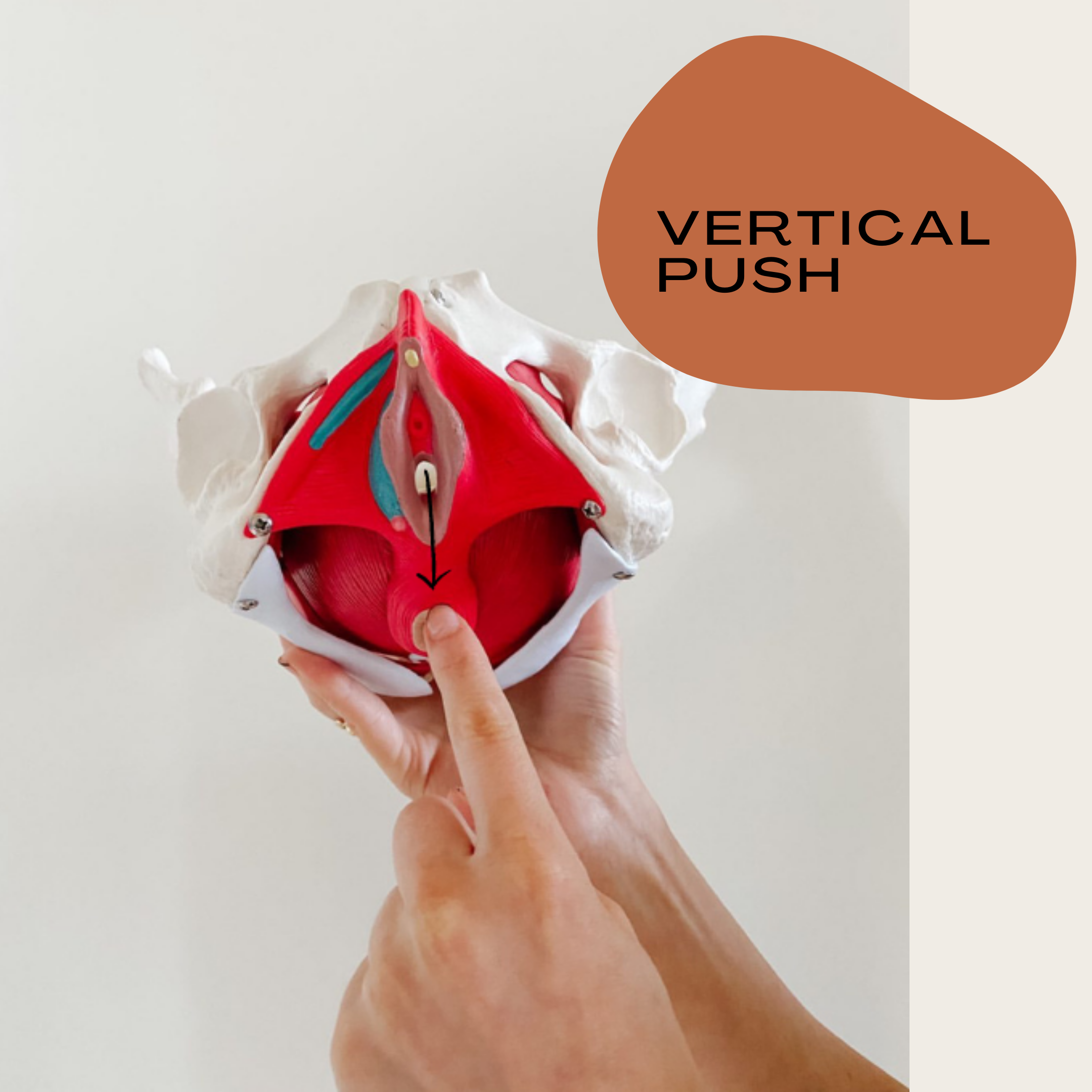Prevent Tearing During Delivery with Perineal Massage
The majority of pregnant people experience some degree of tearing during delivery, with perineal tears being the most common form. Although tearing is common, that doesn’t mean it is normal or beyond prevention!
The perineum is classified as the space between the vagina and the rectum. At the midline of the perineum, the pelvic floor muscles attach into a fibromuscular structure called the perineal body.
As a central attachment site for the pelvic floor muscles, the perineal body assists the pelvic floor to function appropriately. Tearing of this structure can lead to decreased pelvic organ support and increased risk of pelvic organ prolapse.
One of the most effective techniques you can use to reduce the risk of tearing is perineal massage. It is simple to learn, low-cost (just a little coconut oil), and it can be performed by you or your partner at home.
If there is soft tissue or muscular tension present, the perineum can become tight and resistant to stretch. During delivery, this area needs to stretch to accommodate the baby. The more supple and elastic the perineum is, the more stretch you will achieve, and the lower your risk of tearing will be. Perineal massage teaches the perineum and pelvic floor muscles to respond to stretch, as well as helps to achieve suppleness in the soft tissue and reduce muscular tension.
For every new parent preparing for labour and delivery, perineal massage is a must. If you find that you carry tension around your inner thighs, pelvic floor, abdomen, and hips, this is a triple must.
The Steps
Timing: You can start performing perineal massage around 34-35 weeks’ gestation and continue up until your due date!
Duration and frequency: 5 minutes, 3-5x/week
What you need: coconut oil or another natural lubricant of your choice (gloves and mirror are optional!)
Pressure level: significant pressure - enough to elicit a deep stretching sensation, but not pushing into discomfort or pain.
Position: get into a comfortable position, preferably lying or half-sitting with your back supported by a pillow. Shoulders and neck are relaxed. Legs are bent and resting on a bolster/pillow to prop them up. Avoid completely flopping the legs to the side or lying straight out in front of you.
STEP 1 - Vertical push: with one finger in vaginal canal, press down vertically towards the anus. Hold for 60s.
STEP 2 - U-massage: with one finger in vaginal canal, press down vertically towards the anus and sweep your finger left to right to create a “U” shape. Perform for 60s, repeat for two sets.
STEP 3 - Peace Sign: with one finger in vaginal canal, press down at a 45-degree angle from the midline of the perineum. Hold for 60s and repeat on other side.
You can choose to spend extra time on spots that are particularly tense or resistant to stretch! If you experience any pain or are finding that there is excessive tension in the perineum and pelvic floor muscles that isn’t responding to perineal massage, please see a Pelvic Floor Physiotherapist for further guidance and support.
Additional tips to help relax the perineum and surrounding tissues:
Combine perineal massage with diaphragm breathing
Perform inner thigh and abdominal massage on yourself
Avoid holding your breath/bearing down during activities and exercise
Perform pelvic floor lengthening exercises (see a pelvic floor therapist for guidance)
Practice daily meditation
Take regular breaks each hour to stretch during prolonged sitting – consider practicing yoga for a total body stretch and relaxation!
About the Author
Hayley is a Registered Physiotherapist with a special focus in Pelvic Health and Women’s Health. Hayley obtained her Master of Science in Physical Therapy from the University of Toronto. Hayley has completed advanced courses in perinatal care and pain science and is currently completing her yoga instructor’s certification. Hayley practices pelvic and orthopaedic physical therapy at two clinics in Toronto, Ontario. In her free time, Hayley works with the Women’s Health Division of the Canadian Physiotherapy Association as their Newsletter Editor. Hayley is passionate about empowering women, helping them to understand and love their bodies, and ensuring they have the knowledge and confidence to make the best decisions for their health.
References
Siccardi MA, Bordoni B. Anatomy, Abdomen and Pelvis, Perineal Body. [Updated 2020 Aug 15]. In: StatPearls [Internet]. Treasure Island (FL): StatPearls Publishing; 2020 Jan-. Available from: https://www.ncbi.nlm.nih.gov/books/NBK537345/







